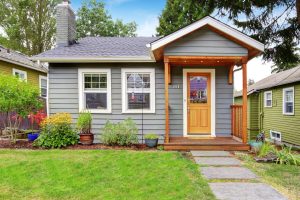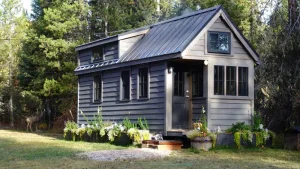The allure of living in a tiny house is undeniable. The benefits include a simpler lifestyle, less impact on the environment and more opportunities for adventure. However, before you start building tiny homes, it is imperative to understand the nuanced building codes that apply to such tiny homes. The process of navigating tiny home building codes can sometimes feel like solving a puzzle, but with the right advice, you can make your dreams of owning a tiny home come true.
Acquire Basic Knowledge:
The standard definition of a “small home” is a residential structure with a gross floor area of less than 400 square feet. Despite their many benefits, their limited size can make it difficult to comply with local zoning and building codes. Because building codes can vary widely from region to region, it’s worth doing your research and fully understanding the requirements that apply to your region before you begin building a tiny house.
The Importance of Foundations:
When building a tiny house, the foundation is one of the most important aspects to consider. Various alternatives are possible, such as trailers, skids or fixed foundations. Depending on the path you choose, you may be governed by different building codes. For example, if you build a tiny house on wheels, it can be classified as a recreational vehicle and fall under the recreational vehicle regulations.
Zoning and Land Use:
Zoning regulations in your area are the most important factor in determining where to place your tiny house. Some cities have shown support for the tiny housing movement by creating unique zoning categories or even assigning entire neighborhoods to housing options. However, zoning restrictions can be stricter in some places, making it difficult to find a legal place to park your tiny house. Do your research on zoning regulations in your area to make sure you adhere to them.
Safety First:
When building a tiny house, safety should always be your number one concern. While these regulations may seem harsh, their primary purpose is often to protect the health and safety of residents. This includes provisions for proper plumbing, electrical systems and insulation, in addition to fire safety measures. By following these rules, you not only protect yourself, but you also protect the value of your tiny house and ensure that it lasts as long as possible.
Seek Professional Advice:
Due to the complexity of building regulations and guidelines, it is best to seek expert advice. It is in your best interest to consult a legal professional, builder or architect who has experience with small home law. Doing so will save you time, money and heartache. They can guide you through complex issues, help you make informed decisions, and ensure that your tiny home meets all basic building codes.
Conclusion:
Transitioning to tiny house living takes more than creative design and the ability to downsize; you also need a good understanding of building codes. Doing a little research on your area’s requirements, emphasizing safety, and seeking expert guidance will help you successfully navigate the complex world of tiny home building codes. Remember, building your home in compliance with all applicable laws not only ensures a safe place to live, but also helps the overall tiny home movement grow. As you continue your journey towards a simpler lifestyle, you should be guided by building codes on the legal and safe way to live in a tiny house.
FAQs:
1. What are building codes and why are they important for small homes?
Building codes are regulations created by local authorities to set standards for the safety, hygiene and livability of buildings. These codes ensure that structures, including micro-homes, meet specific requirements to protect the well-being of residents and maintain the integrity of the community.
2. How do building codes differ between a tiny house on wheels and a tiny house on wheels? The one on a permanent foundation?
Codes may vary depending on the underlying type. If your tiny house on wheels is designed to be mobile, it may be subject to recreational vehicle (RV) codes. On the other hand, those built on permanent foundations may have to adhere to more traditional residential building codes.
3. Do specific zoning regulations apply to the placement of tiny houses?
Yes, zoning rules vary by jurisdiction. Some areas have embraced the tiny house movement and created special zoning categories or neighborhoods for tiny houses. Research local zoning laws to determine where you can legally place your tiny house.
4. How do I make sure my tiny house complies with electrical and plumbing regulations?
Consult professionals familiar with small home construction, such as electricians and plumbers. They can ensure that your electrical and plumbing systems meet required safety standards and codes.
5. Can I build my tiny house without professional help?
While some people have success building their own tiny house, it is advisable to seek professional guidance, especially if you are new to code building. Architects, builders, and legal experts can offer insights to help you navigate the process.



